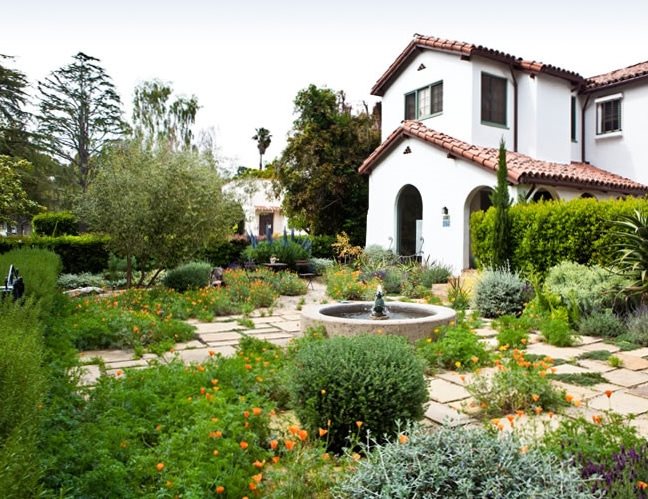What Does Hilton Head Landscapes Mean?
What Does Hilton Head Landscapes Mean?
Blog Article
Indicators on Hilton Head Landscapes You Need To Know
Table of ContentsThe Only Guide for Hilton Head LandscapesA Biased View of Hilton Head LandscapesThe Single Strategy To Use For Hilton Head LandscapesOur Hilton Head Landscapes Ideas4 Easy Facts About Hilton Head Landscapes DescribedThe Of Hilton Head LandscapesAll About Hilton Head Landscapes
Line produces all kinds and patterns and can be utilized in a range of ways in the landscape. Line in the landscape is produced by the edge in between 2 materials, the rundown or silhouette of a form, or a lengthy linear feature. Lines are a powerful device for the designer since they can be used to produce an infinite selection of forms and types, and they regulate movement of the eye and the body.

Lines can have several attributes, such as those defined below, but they usually offer various functions. Number 1. Lines in the landscape - hilton head landscapers. The residential properties of lines identify exactly how people respond to the landscape, both mentally and literally. Straight lines are structural and strong; they create a formal personality, are normally related to a symmetrical design, and lead the eye directly to a prime focus.
Hilton Head Landscapes Can Be Fun For Everyone
Straight lines are usually located in hardscape sides and material. Rounded lines produce a casual, all-natural, loosened up character that is connected a lot more with nature and asymmetrical balance. Curved lines move the eye at a slower rate and include secret to the space by creating concealed sights. Upright lines relocate the eye up, making a room really feel larger.
Vertical lines in the landscape include tall, slim plant product, such as trees, or tall frameworks, such as an arbor or a bird home on a post. Straight lines move the eye along the ground airplane and can make a room really feel larger. Low lines are a lot more subdued and produce a sensation of rest or repose.
See This Report on Hilton Head Landscapes
Reduced lines are produced by reduced garden wall surfaces, sidewalks, and short bushes. Lines are made use of to draw types on a plan. In strategy view, they specify plant beds and hardscape areas. Lines are likewise created by the upright forms of constructed features and plant product. There are 3 key line types that create kind in the landscape: bedlines, hardscape lines, and plant lines.
Bedlines link plant material to the home and hardscape since the eye follows the line, relocating the look with the landscape. Hardscape lines are produced by the side of the hardscape, which defines the constructed structure. Line can likewise be produced by lengthy and slim products, such as a fencing or wall.
The Definitive Guide to Hilton Head Landscapes
Type is found in both hardscape and plants, and it is generally the dominant visual component that spatially arranges the landscape and often figures out the design of the yard. The form of structures, plant beds, and yard accessories additionally figures out the general type theme of the yard. Official, geometric forms consist of circles, squares, and polygons.
Plants produce kind in the garden through their lays out or silhouettes, however form can additionally be defined by a gap or negative area between plants - Landscaping bluffton sc (https://www.huntingnet.com/forum/members/h1tnhdlndscps.html). Circles can be full circles, or they can be separated right into half circles or circle segments and incorporated with lines to develop arcs and tangents
Hilton Head Landscapes for Beginners
Circles can additionally be stretched into ovals and ellipses for even more range and rate of interest. Circles are a solid style type due to the fact that the eye is constantly drawn to the center, which can be made use of to highlight a focal point or connect various other forms. Figure 2. Circular forms in hardscape and yard panels.
The square kind can likewise be fractional and used repeatedly to produce a grid pattern. Unlike circles, squares are more powerful on the sides, which can be aligned or overlapped to produce unique patterns and more complicated kinds. Polygons are many-sided forms with straight edges. Triangles, for instance, are three-sided polygons.
Twisting lines often resemble the natural training course of rivers or streams and can be called smooth lines with deeply curved undulations. Meandering lines (Figure 3) work well for pathways, plant bedlines, and dry stream beds. Twisting lines can add passion and mystery to a garden by leading customers around corners to uncover brand-new views and spaces.
Hilton Head Landscapes Can Be Fun For Everyone

Common plant forms are well developed and standard, as type is the most regular and recognizable quality of plants. Form can additionally be developed through the massing of plants, where the overall mass develops a different form than a private plant.
An extremely contrasting type has to be made use of with careone or more work well as a focal point, yet as well lots of wreak havoc. All-natural plant forms, instead of over-trimmed types, ought to develop the mass of the structure. The significance of total form is basically dependent on the seeing perspectivethe type of a tree can appear fairly different to an individual standing under the cover versus watching the tree from a range in an open area.
Hilton Head Landscapes Fundamentals Explained
Plant types also produce and specify deep space or open spaces in between the plants, developing either convex or scooped forms in deep spaces. High-arching tree branches commonly develop a concave open room under the branches, and a rounded canopy with low branches fills up the room to create a convex type in the open space under the tree.

Report this page